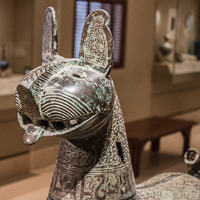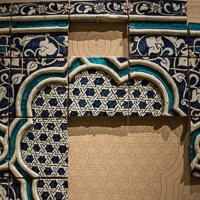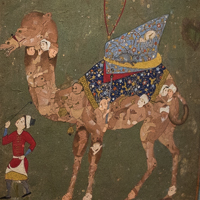
About the Collection
Islamic Art is produced under unique creative constraints: no images or representations of things real or imagined. In the 15 rooms of the Islamic Art wing, you will not see the landscapes, portraits or still-life paintings that make up the bulk of the European collection. Instead, Islamic Art focuses on intricate patterns, skillful calligraphy, and complex design to create beauty and to inspire. This gallery is the logical sequel to the Met’s small Near Eastern Art gallery, marking the conquest of ancient lands by Islam and the resulting cultural and religious influence. It is a peaceful, informative and beautiful corner of the museum well worth exploring.

What You Will See
The Met’s collection of Islamic Art spans the globe and crosses centuries. From Spain and Morocco in the west, all the way to the Indian subcontinent, samples of work by artists and craftsmen from the major Arab cultures of the world educate and inspire. Objects grand and small fill the space, arranged in rough geographic and chronological order. Renovated in 2011, the Art of the Arab Lands gallery is one of the newest areas in the museum and the freshness has not yet worn off. Visit these galleries not just for the art, but also to appreciate modern curatorial styles: compare the spacious, well-lit design of the Islamic galleries to the older rooms in the Egyptian or Asian wings.

Why You Should Go
This is arguably the most important part of the Met’s permanent collection. Discussions of Islam and traditionally Arab lands dominate political discourse while understanding the history and culture of the region remains dangerously low. The Met takes no stand on modern issues. Instead, the galleries are designed simply to educate. Without overwhelming you with information, an hour in this department walks you through the long history of Islam, discusses regional and religious differences, and demonstrates the influence Arab thought had on other cultures. The stories are told through the objects: the jewels, the weapons, the architectural embellishments, the mosaics and the ceramics. A visit is timely and increasingly necessary.




